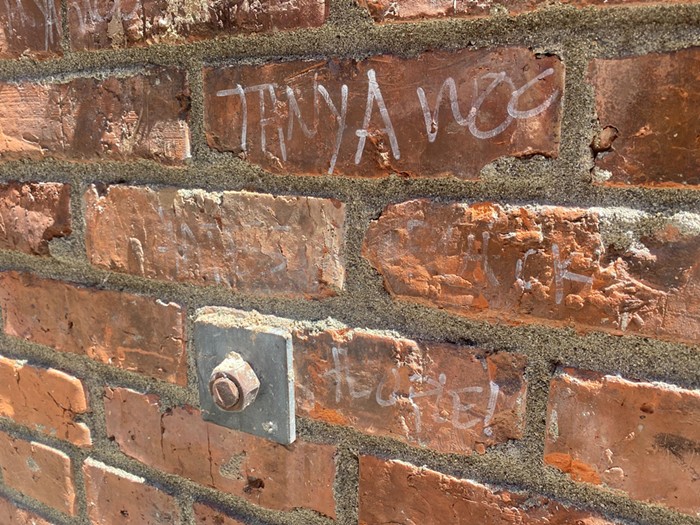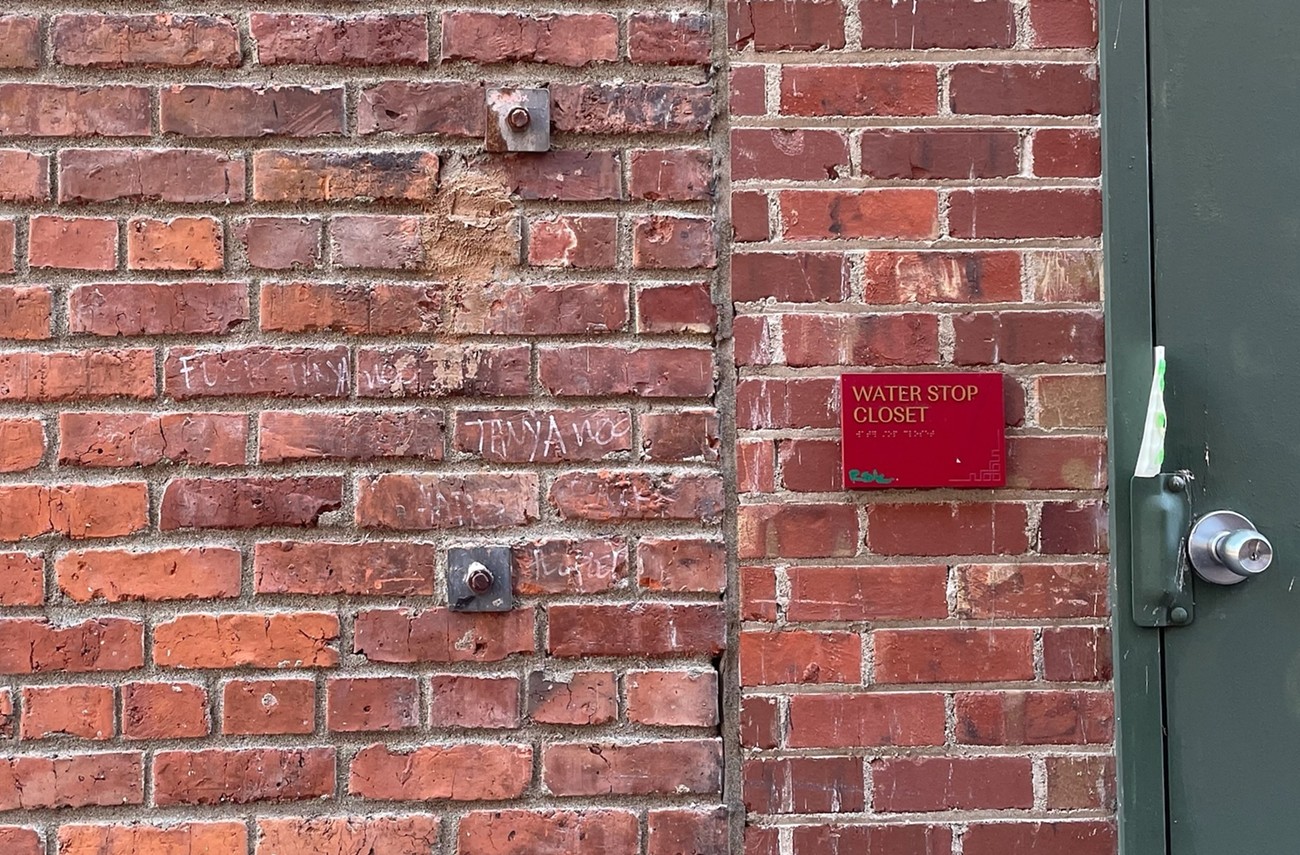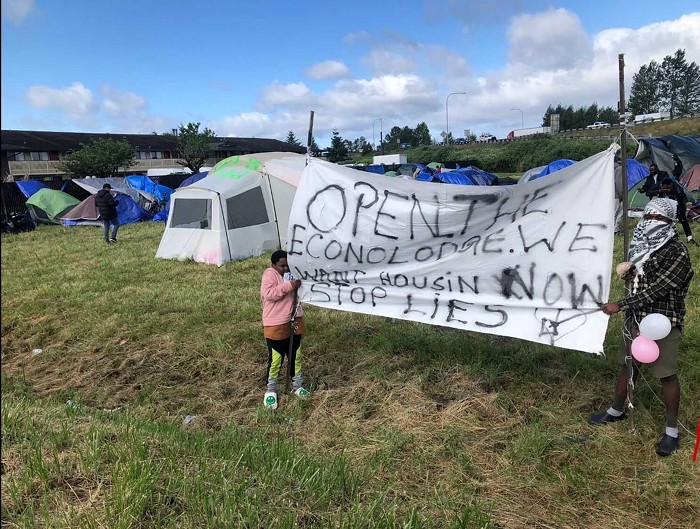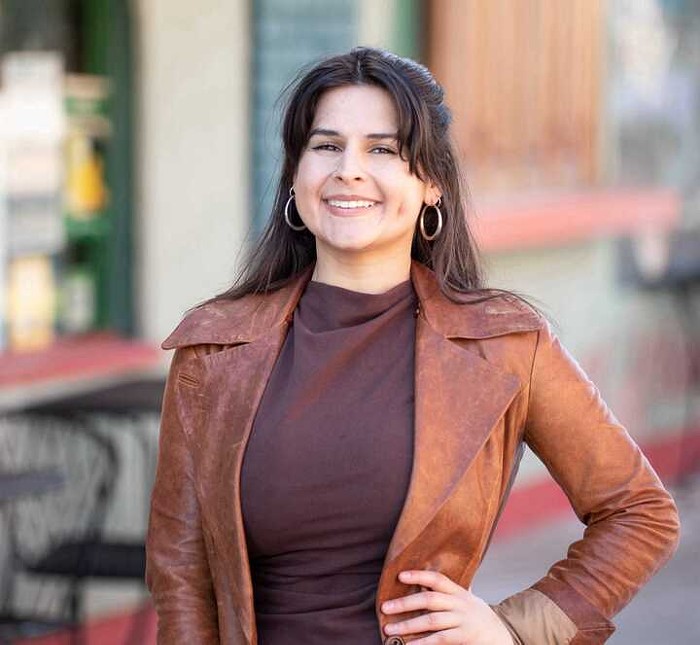Over the weekend, Northwest Asian Weekly ran an op-ed calling out hateful graffiti against Council Member Tanya Woo, who is currently running to keep a citywide seat that the council appointed her to after she lost a district election to Council Member Tammy Morales. The op-ed ended with a call to stand against “anti-Asian hatred and xenophobia,” but the author did not explain how the graffiti, which appeared in three locations in the Chinatown-International District (CID) where Woo volunteers and also helps manage her family’s property, perpetuated those biases. The author also did not include photos or reproduce the text of two of the pieces of graffiti. The only piece of graffiti shown in the article reads, “Fuck Tanya Woo get her out!”
Woo submitted the op-ed on behalf of the writer, Askari Addison, a member of Woo’s Chinatown-International District Community Watch group. NW Asian Weekly Editor Ruth Bayang said she never communicated with Addison about the op-ed, and that she only spoke with Woo. Aside from sending along the article itself, Woo also provided the publication with three photos of the hateful graffiti, but the outlet decided to run only one of them. Bayang said she couldn’t give The Stranger the other two photos without permission from Woo, so we ran out and found them.
One piece of graffiti written in some kind of paint pen or white-out pen on the Louisa Hotel, a historic building that Woo’s family owns, reads, “Fuck Tanya Woo. Tanya Woo hates Black people.”

Another piece written on a red post at Hing Hay Park in the same kind of marker read, “Tanya Woo is…[indecipherable].” The word the writer intended to write looks like “racist,” but it’s impossible to say.

When asked why NW Asian Weekly didn’t run the photos of the other graffiti or even include descriptions, Bayang blamed conflict with Woo. According to Bayang, she and Woo agreed to blur out the word “fuck” from the first photo, but she disagreed with Woo’s suggestion to blur out the word “Black” from the other photo. Bayang said Woo wanted to blur “Black” from the graffiti to avoid offending Black people, but Bayang worried that people might think the publication considered the word “Black” profane. Given their differences, Bayang decided it was “simpler” not to run the photo.
The Stranger texted, called, and emailed Woo for comment. Woo, who’s shown a preference for avoiding the press, did not respond to our questions. Instead, she pointed to the comments she made at the city council briefing on Monday. During the briefing, she condemned the graffiti as property destruction, and she argued that people who live in the CID would take the message “Fuck Tanya Woo get her out!” as an attack on them and not an attack on Woo because that community “doesn’t understand politics.”
“When you … direct an expletive toward somebody in the community and you say ‘get out,’ they’re not going to think ‘[get out of] office,’ they’re going to think exclusion,” Woo said.
Woo also claimed that two different men on two separate occasions over the weekend approached her in the CID, referenced the graffiti, and threatened to harm her. She said one man threatened to kill her, and another man swung a bat around, banged it on the walls and floor, pointed it at her, and “just kind of repeated what the graffiti said,” she recalled. Woo did not answer follow-up questions about the incident or about why she didn’t report it to the Seattle Police Department (SPD).
While in the briefing, Woo also said that members of the community had brought the graffiti to her attention, that she’d never actually seen it herself, but that she’d received multiple calls about it from community members, who then took it down before she could read it. But two pieces of graffiti remain up as of Tuesday. Moreover, in an interview with The Stranger, the op-ed writer, Addison, said he and Woo had seen the graffiti together while walking with their community watch group on the Friday before the article ran. Addison acknowledged that Woo coordinated submitting the story to Northwest Asian Weekly, but when asked what prompted him to write about it, he said he’d have to call me back because he was in the middle of moving. (Oof, in this heat!) Woo did not immediately respond to a request for comment about the inconsistency.
At the top of the city council briefing Monday, City Council President Sara Nelson called the graffiti “hate speech” that “targetted a sitting Asian council member in an apparent attempt to intimidate her out of office.” Council Members Bob Kettle and Cathy Moore also voiced support for Woo. I asked all three members by email if they were aware that Woo had submitted the op-ed and the photos to Northwest Asian Weekly, whether she’d shown them the photos, and what they viewed as “hate speech” in those photos. They did not respond.
A spokesperson for the SPD said Woo reported the graffiti to the FBI and that the department’s Bias Crimes division was aware of it but had not received a police report from her. An FBI spokesperson said the agency was aware of the graffiti but that policy prevents the FBI from confirming or denying the existence of an investigation. The spokesperson said that, in general, the FBI does not typically investigate non-threatening hate conduct that is protected by the First Amendment.
We asked Bayang if we’d missed anything in the photos that might have led Woo and Addison to refer to the graffiti as “hate speech.” Bayang guessed that Addison equated the graffiti’s anti-Woo message with an anti-Asian message.
Addison confirmed he’d seen no other graffiti messages other than the three in the photos Woo had sent. He said he felt those messages contained racist elements and played on the trope that Asians hate other races. He also pointed to the location of the messaging, arguing that whoever had written it had chosen to place the messages in the CID, not in West Seattle or other neighborhoods, despite Woo representing a citywide seat on the council. He also said he felt broadly that the anti-Woo messaging he saw on social media seemed to have racist undertones.
CID Community Leader Michael Itti elaborated on what made the messages particularly concerning, underscoring how the graffiti damaged property in a district that the National Trust for Historic Preservation named among the nation’s 11 most endangered places in 2023. He also pointed out how the messages targeted Woo specifically, despite the fact that the city council has nine members, and that whoever wrote the graffiti chose to target a council member in a neighborhood she’s deeply connected to. He agreed that the phrase “get her out” can be deeply concerning for immigrants and those who have heard similar phrases used to discriminate against immigrant communities.
Furthermore, some could view the phrase “Tanya Woo hates Black people” as an attempt to stir up tensions between Black and Asian communities, two groups with a long and disputed history of conflict, as well as solidarity. Moreover, any damage to the historic landmarks of the CID—even if it’s reversible—links back to a long line of assaults on Asian communities in Seattle, and in the US more broadly.
On the other hand, while it’s certainly true that the graffiti-writer targeted Woo instead of the other nine council members, it’s also true that Woo is the only member currently running a campaign for office. None of the graffiti references Woo as an Asian woman, and though tagging the CID does carry problematic undertones, Woo’s community watch group meets at the Hing Hay Park pagoda near the red post tag, and Woo’s family owns the historic building that was tagged, which could suggest that the vandal or vandals envisioned a more direct audience for their writings.
That person or those persons may also have legitimate beef with Woo’s policies that led them to call her out as anti-Black or racist, including her vote to kill an affordable housing incentive package proposed by her political rival, Morales, which aimed to create affordable housing without displacing communities. Woo also voted to delay a vote on Council Member Maritza Rivera’s amendment to short-change the City’s Equitable Development Initiative, which ultimately prolonged the debate over whether to strip funding from more than 50 mostly Black-led capital projects. The “Woo hates Black people” tagger may also be referencing Kanye West’s famous post-Katrina dig against George W. Bush, who neglected New Orleans following the storm. Finally, on the day she assumed her seat, Woo said the council hadn’t seen an “Asian female” since Council Members Cheryl Chow and Martha Choe, erasing the tenure of former Council Member Kshama Sawant, who served for years.
Still, in recent years people have routinely attacked women of color in local office. A couple years ago, a man with a pistol showed up outside Seattle Congresswoman Pramila Jaypal’s house. Sawant herself reported people leaving bags of poop at her house, and she dealt with death threats during her time in office. Some considered the recall election against Sawant to be, in part, racially motivated. Former Council President Debora Juarez also dealt with bullying emails after a video of her not giving a white man her full attention during a public comment period went viral, as reported by Publicola. In that instance, some people went on to aggressively email then-Council Member Teresa Mosqueda about the incident despite Mosqueda not even attending that meeting. Incidents of intimidation against city council members led the council in 2022 to pass a resolution condemning “harassment, threats, and political violence against elected officials.”




















